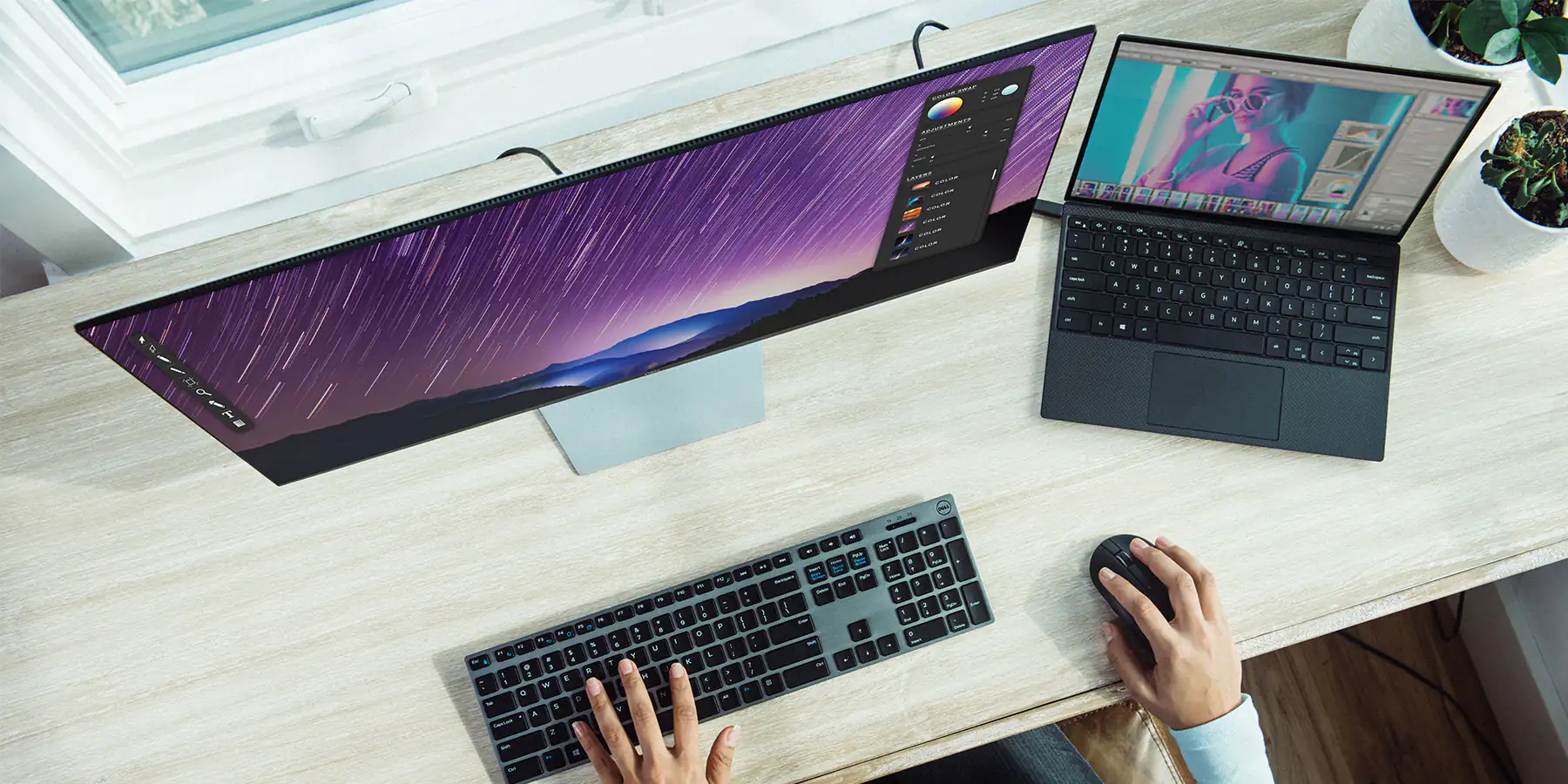For all the time we spend in front of LCD screens, it’s surprising that there’s not much discussion about which screens are best for our eyes. In fact, a good portion of people who regularly use computers, television, or mobile displays don’t even know that they have options!
There are various kinds of monitors on the market, making it challenging to research the best options without committing time and energy that could be better spent elsewhere. Thankfully, research has gone into tracking the effect of screens on eye strain.
With workplaces being reshuffled due to the pandemic, finding a screen that does more good than harm is of the utmost importance. Choosing the right monitor will be essential so that you can work without putting your health at risk.
Matte Vs. Glossy Monitors: What Is The Difference?
Matte and glossy monitors look distinctly different under bright light conditions. However, there are more differences between these monitors than just their appearance.
Glossy monitors are much more prevalent in current-day computer displays. The majority of electronics retailers display glossy screens on their shelves. Glossy displays provide a rich, high contrast color range that many people prefer for movie-watching experiences and photo editing.
The best way to differentiate a glossy display from a matte display is its shiny reflective surface. Having a layer of anti-glare coating applied to the surface, matte monitors are specifically made to reduce reflections.
Matte screens are, unfortunately, not as readily available in stores because they’re less popular with general computer users, despite being indispensable for specific tasks. These screens do a great job retaining color depth under bright lights – even sunlight bounces right off it.
Matte coating on computer and TV displays is uncommon in general use, but people working under bright lights or outdoors prefer it. Colors may appear dull on matte displays compared to glossy ones. But if all you see on your glossy screen is ugly reflections, matte is a clear solution. Plus, they are much better at reducing eye strain, no matter the light conditions.
Why Are Matte Monitors Better On The Eyes?
If you were to use the brightest room in your house as your workspace, you would quickly discover why glossy computer monitors may not be suitable. As soon as you open the windows and let the light shine on the screen, you will notice how distracting reflections this monitor produces can be. The tiny muscles in your eyes will have to work overtime by squinting out the bright spots on glossy displays.
Users may get accustomed to these painful reflections, but their eyes will feel the strain after a few hours. Glossy monitors wreak havoc on our eyes in bright lights.
We have to constantly focus and refocus on parts of the screen in shadow and light. It’s easy to understand how painful this can be, especially if you spend more than eight hours at the computer for work.
However, being worse for your eyes than matte monitors is not the only disadvantage of glossy screens. Besides glares and reflections, color quality also suffers, potentially ruining your computer session or TV experience. While glossy LCDs offer color saturation, depth, and range, a small annoying reflection may cancel out all of its benefits in one fell swoop.
Matte screens come equipped with a chemically-treated polarizing outer layer. This surface helps diffuse ambient light (sunlight). The matte layer goes on with several ‘dip coating’ passes in a chemical bath at the factory.
The screen has less of a “mirror” quality and more of a hazy, opaque look. The result is that anti-glare coats reduce eye strain because our eyes don’t have to work hard to register a clear image. Even creative professionals like music producers benefit from a matte monitor.
Disadvantages Of A Matte Monitor
Matte monitors are not perfect either. While their anti-glare technology beats out glossy screens for eye strain problems, it has its own disadvantages.
Images on matte monitors aren’t capable of emitting a wide range of colors – or at least, not as many colors as a glossy monitor. The chemical process of applying the matte surface gives images a milky, opaque hue. For professional photo or video editors, the hazy effect of matte screens is a significant deterrent to purchasing this screen.
There are also much fewer options on the market when it comes to purchasing matte monitors. Less variety means users may need to make compromises when considering a matte screen purchase.
Some users may even experience a drop in image sharpness with matte monitors. This effect may depend on the thickness and layering of the matte, however.
Finally, matte screens can be harder to clean than their glossy counterparts. This is because it is more difficult to see dirt and oily residues on matte screens. While this might lead persons to believe they will not have to worry about this issue, the opposite is true. Dirtiness may impede a monitor, and performance will suffer as a result, regardless of how visible the dirt may be.
Best Overall Matte Monitor
While matte monitors may not be perfect, investing in one may be a smart option. While there are fewer options on the market, you can rest assured that most matte monitors are high quality.
In our opinion, the best overall matte monitor is the Dell P2721Q display. It comes with an ultra-thin bezel display that leads the industry with a 60Hz refresh rate and plenty of USB-C, HDMI, and DisplayPort options. This screen is ideal for both business and gaming and can even be used as a TV monitor.
What We Love
As long as you’re able to change the refresh rate on a Mac to match Dell’s 60Hz, this monitor runs brilliant colors for both Mac and PC users.
What To Consider
Like many matte displays, this Dell display isn’t immune from ghost image retention. Dark outlines may linger on the monitor for up to three days, but they will disappear with time.


